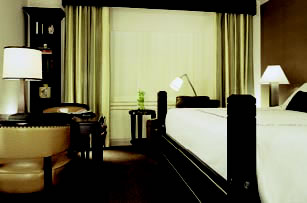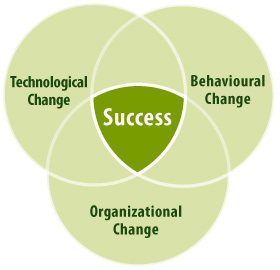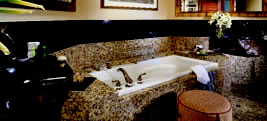ARCHIVED - Saving Energy Dollars: Getting Started
Information Archived on the Web
Information identified as archived on the Web is for reference, research or recordkeeping purposes. It has not been altered or updated after the date of archiving. Web pages that are archived on the Web are not subject to the Government of Canada Web Standards. As per the Communications Policy of the Government of Canada, you can request alternate formats. Please "contact us" to request a format other than those available.
Hotel, Motel and Restaurant Energy Statistics
Between 1990 and 2000, the average annual energy cost of Canadian hotel guest rooms rose by over $500. Restaurants saw similar trends where costs increased by over $35 per square metre (m2) during that period.
Among commercial and institutional sectors, hospitality ranks as one of the most energy intensive with correspondingly high energy costs. Hotels, motels and restaurants account for approximately 1.1 percent of the total end-use energy consumed in Canada with approximately $1.5 billion in energy bills, 84 million gigajoules (233 million equivalent kilowatt hours) of energy consumption and 5 million tonnes of greenhouse gas (GHG) emissions each year


Getting Started
Among all your operating costs, energy utilities are one of the most controllable. Through energy-efficient equipment and practices, even new facilities can achieve savings of 20 percent or more. This degree of cost cutting can improve your bottom line, increase profits and put your facility in a more price-competitive position allowing you to concentrate on guest occupancy and traffic.
In addition to the advantage of utility savings, energy efficiency measures can
- improve guest comfort and satisfaction levels;
- add to the aesthetic appeal of your facility;
- reduce maintenance costs and system failures;
- increase equipment life and building value; and
- enhance corporate citizenship building retrofits and other energy efficiency measures help reduce GHG emissions that contribute to climate change.
This guide is written for hospitality managers and is meant as an introduction to energy efficiency. It will help expand your knowledge so you can successfully work with engineers, energy consultants and other contractors to develop and implement an Energy Management Plan (see the box on Energy Management Plans and, in Step 3: Determine Where You Use Energy, the box entitled You Cannot Manage What You Do Not Measure).
On the following pages, you can learn the basics of how to
- calculate your facility's current energy use;
- compare your operation with others in Canada;
- adopt measures that could lead to both cost and energy savings; and
- calculate those potential savings.
The guide also includes a number of low- and no-cost Energy Tips compiled specifically for the hospitality industry.
Whether you run a five-star hotel or a small café, this information should give you ideas on how to save energy dollars in your organization.
A Change in Thinking: Steps in the Right Direction
In most cases, a successful energy efficiency program will require your facility to make some basic changes in the way you use technology, in the way staff acts and in the way you set internal policies or procedures. These changes need not be drastic or costly, and in fact, even minor improvements can often result in savings. What is most important to remember is that none of these changes alone will deliver substantial savings. The greatest benefits of an energy efficiency program will be realized only when you have senior management support and implement the following changes concurrently throughout your entire operation.
Technological Change Lighting, motor, HVAC (heating, ventilating and air conditioning), domestic-water, energy-control and building-envelope technologies are constantly improving and becoming more efficient.
Behavioural Change Guests and employees use energy, and their habits have a tremendous effect on whether or not it gets used wisely. There are opportunities to save energy dollars by influencing behaviours, improving knowledge and skills and offering rewards.
Organizational Change Policies and procedures can help drive down utility costs, and support from senior management is crucial. Set up an energy committee, include energy-reduction goals in job-accountability forms, present cost-reduction progress reports in staff meetings and regularly track utility costs through a bill-monitoring program in your accounting department.

Employees: Your Energy Efficiency Ambassadors
Although energy-efficient equipment and energy-saving measures contribute to lower costs, it is important to remember that equipment is used and measures are implemented by people. While you can suggest environmentally-conscious actions to your guests, you have a greater influence over those who work for you.
If employees are to consider themselves a part of an energy-efficient organization, they need clear and factual information to help improve their understanding. Familiarize your team with your facility's heating, lighting and ventilation systems. Make sure they know the location of major pieces of energy-consuming equipment. Tell staff in advance about any new initiatives and retrofits. The better informed employees are, the more qualified they will be to act as effective energy efficiency ambassadors to your guests.
Encourage your employees to participate in an energy efficiency campaign by asking for their input, establishing clear and realizable goals, and agreeing on responsibilities. Acting without consultation will discourage their participation.
Employees are your eyes and ears. In their front-line roles, they are ideally positioned not only to identify drafts, leaks, unnecessary lighting and other signs of energy waste in your facility, but also to provide energy efficiency advice. Listening to staff input could help you save even more money.


Remember to report results. Let employees know when their efforts have contributed to energy savings that benefit the company and the environment. Show them what's in it for them with incentive and recognition programs paid directly out of the energy savings.
Check out the Energy Tips section of this guide for other staff-related hints.
Training and Awareness
Staff training and awareness can cut your energy costs often from 2 to 10 percent in addition to other energy efficiency measures.
Consider specialized training for engineering and maintenance staff. Courses in building systems and energy efficiency will enable technical staff to modify operations and increase efficiencies. Non-technical staff will benefit greatly from in-house seminars, staff meetings and demonstrations that target energy efficiency in your facility. Internal communication programs can employ a variety of tools including posters, flyers and newsletters to create awareness of energy efficiency and its relation to saving money and the environment.
Communicate your energy concerns and achievements to guests as well. As their awareness of energy efficiency and the environment increases, so do their expectations of you as their host. You could post friendly reminders about turning off lights or provide information on how a recent energy retrofit is helping the environment and keeping prices low. Some hotel guests are happy to have the choice to use the same towels and linens for the duration of their visits rather than incur the environmental costs of laundering them each day. You might even show them techniques they can use at home. Remember: you can increase guest satisfaction and loyalty by showing that you care about energy efficiency and climate change.


Energy and Climate Change
Energy efficiency helps protect the environment by reducing GHG emissions that contribute to climate change. The more energy we produce and fuels we burn, the more we release carbon dioxide, methane, nitrous oxide and other harmful gases into the atmosphere gases that add to the global-warming potential.
GHG emissions calculations differ across the country due to the different methods of electrical generation and types of fuel.
Learn more about these environmental and energy issues at www.climatechange.gc.ca.
The Energy Management Matrix
At the end of this guide you will find an energy management matrix. Each column pertains to a key aspect of organizational energy management, and the five rows indicate levels of achievement. Follow these steps to determine your organization's current energy management rating and to track your progress over time:
-
Photocopy the matrix on pages 46 and 47.
-
Complete the matrix by marking an "X" in each square that corresponds most closely with your current energy practices (mark only one “X” per category).
-
Join the selected “Xs” to form your profile. Any dips in the profile indicate areas that need the most attention. Aim to climb the matrix in a balanced fashion rather than committing yourself in too many areas at once.
-
Ask others in your facility, including engineering and housekeeping staff, to complete clean copies of the matrix. Their individual perspectives will ensure a more detailed view of your operation.
-
Conduct this exercise once a year to help gauge your progress.
Energy Management Plans (EMPs) are tools that help organizations initiate, monitor and track energy savings. These plans focus on activities that will lead to real, measurable results that will save you money. EMPs also offer guidance as you seek commitments from staff and key decision-makers. You can view a sample plan at the Energy Innovators Initiative (EII) Web site at oee.nrcan.gc.ca/eii/tools.cfm.
NRCan offers one-day workshops across the country on developing energy management plans and related topics through Dollars to $ense at oee.nrcan.gc.ca/workshops.
Seneca College's Building Environmental Systems diploma course is available across the country through distance learning. Find out more at www.senecac.on.ca/bes.
View EMPs from other organizations at the Web site for Canada's Climate Change Voluntary Challenge and Registry Inc. (VCR Inc.) at www.vcr-mvr.ca.
Page details
- Date modified: